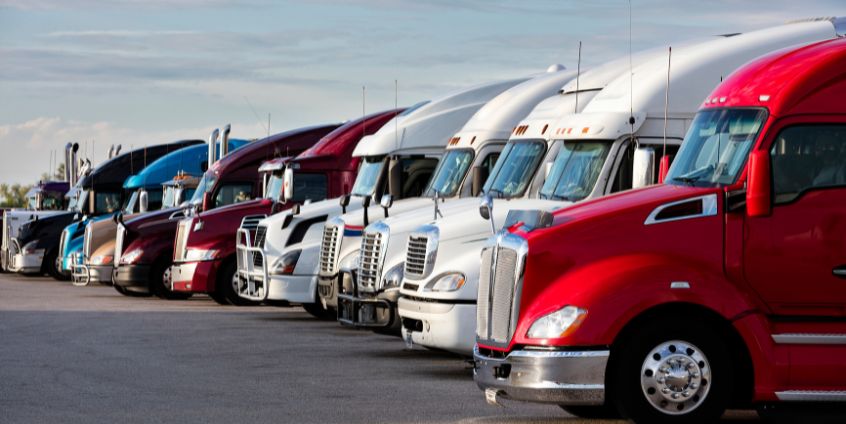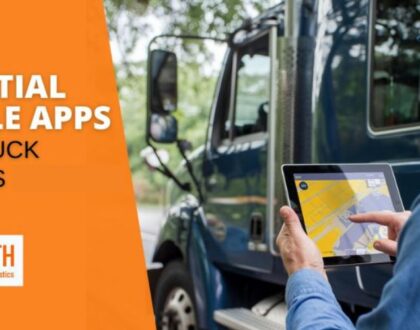Can You Drive a Class B Vehicle With a Class A License?

That is a common question students will often ask our Zenith Institute of Logistics instructors about driving a Class B vehicle using a Class A license. Knowing what your Class A driver’s license allows you to operate that your Class B doesn’t will surprise you. Furthermore, you will discover that Class B CDL vs Class A licenses have dos and don’ts. The information below provides the details you need to know when navigating the world of CDL license compliance.
Understanding CDL Classes
Class A licenses are the most comprehensive, allowing you to drive large vehicles like 18-wheelers and tractor-trailers. These vehicles can carry significant weights, usually over 26,001 pounds, and tow heavier loads.
On the other hand, a Class B CDL is for smaller vehicles, such as straight trucks and large passenger buses. These vehicles also typically exceed 26,001 pounds, but you can only tow smaller weights.
The Hazmat (Hazardous Materials) endorsement is a specialized qualification that can be added to either license, allowing the transportation of hazardous substances. Each class and endorsement presents unique opportunities and responsibilities within logistics and transportation, with varying associated costs.
Class A License: What It Allows
A Class A license opens doors to driving the largest vehicles on the road. That includes big rigs, tractor-trailers, and other heavy-duty trucks typically used for long-haul transportation. These vehicles can have a Gross Combination Weight Rating (GCWR) exceeding 26,001 pounds. They can tow trailers or additional vehicles over 10,000 pounds.
With a Class A CDL, you can drive vehicles like Peterbilt 579s, known for over-the-road long distances, or Kenworth W900s, iconic for their size and power. These heavyweights can transport large loads across long distances and are vital to the trucking industry.
Obtaining a Class A license involves specific training and testing. That includes understanding vehicle mechanics, mastering driving skills for large trucks, and learning safety regulations. The testing process usually comprises a written exam and a practical driving test, ensuring drivers are fully equipped to handle these large vehicles safely and competently.
Class B License: What It Allows
A Class B CDL is for drivers who operate medium-sized vehicles. That includes straight trucks, box trucks, dump trucks with small trailers, and school or city buses. These vehicles typically have a (GVWR) of more than 26,001 pounds but are prohibited from towing vehicles heavier than 10,000 pounds.
Holding a Class B CDL means operating vehicles like the Ford F-750, a robust straight truck, or a Freightliner M2 106, commonly used for regional deliveries and services. These trucks are essential for medium-range transportation and specific urban operations, where maneuverability and size constraints are critical.
When acquiring a Class B license, your training focuses on operating these medium-sized vehicles, including maneuvering, safety protocols, and vehicle inspection. The testing process involves a written knowledge exam and a skills test, ensuring drivers are competent in handling the unique challenges of driving Class B vehicles.
A Brief Difference between Class A and Class B CDL
As mentioned, the differences between a Class A and a Class B CDL relate mostly to the weight of the vehicle and its cargo. Considering that you can drive heavier vehicles with a Class A, you can expect to practice on a variety of trucks with different sizes and types of trailers. For this reason (along with the allowable weight), the Class A is often referred to as the “universal” license since it leads to numerous opportunities from local to over-the-road jobs.
Likewise, when training for Class B, you’ll gain both classroom and road experience just like Class A. Again, the primary difference is the weight class of the vehicle. Also, for both classes, you can obtain endorsements which lead to even more job prospects.
Can You Drive a Class B Vehicle with a Class A License?

With the proper endorsements, such as the passenger and hazmat, a driver who has a Class A license can operate both Class B and Class C vehicles. However, if you have either a Class B or C CDL, you wouldn’t be able to drive a vehicle that falls under the Class A category.
Additional Endorsements and Restrictions
While Class B may seem to have more limits than Class A, you would still be able to train for and obtain additional endorsements. In this situation, you would still have many employment options even if you’re restricted to certain vehicle weight limits. For example, the passenger endorsement allows you to drive school, city, or tourist passenger buses. There are also opportunities to drive a tanker once you have earned that particular endorsement. With a hazmat endorsement, you can deliver medical supplies or haul phlebotomy supplies using a box truck. As long as the combination of vehicle and cargo doesn’t exceed 26,001 pounds, you’ll have plenty of job opportunities to choose from.
Conclusion:
If you possess a Class A CDL license, you can drive a Class B vehicle. However, each state may differ regarding appropriate restrictions and endorsements for your CDL license, and we highly recommend staying current. Mistakes or human error can lead to legal issues and jeopardize road safety. Navigating the world of CDLs using the best knowledge and training ensures a safe and successful career in the trucking industry. Zenith Institute of Logistics offers tailored training programs and expert guidance for those looking to start or further their career in the industry. For personalized assistance or more information, you can contact us directly.
Recommended Posts

Class A Vs. Class B CDL- Which is Better?
March 27, 2025

Essential Mobile Apps for Truck Drivers in 2025
February 25, 2025

How Long Does It Take to Get a CDL
January 3, 2025

